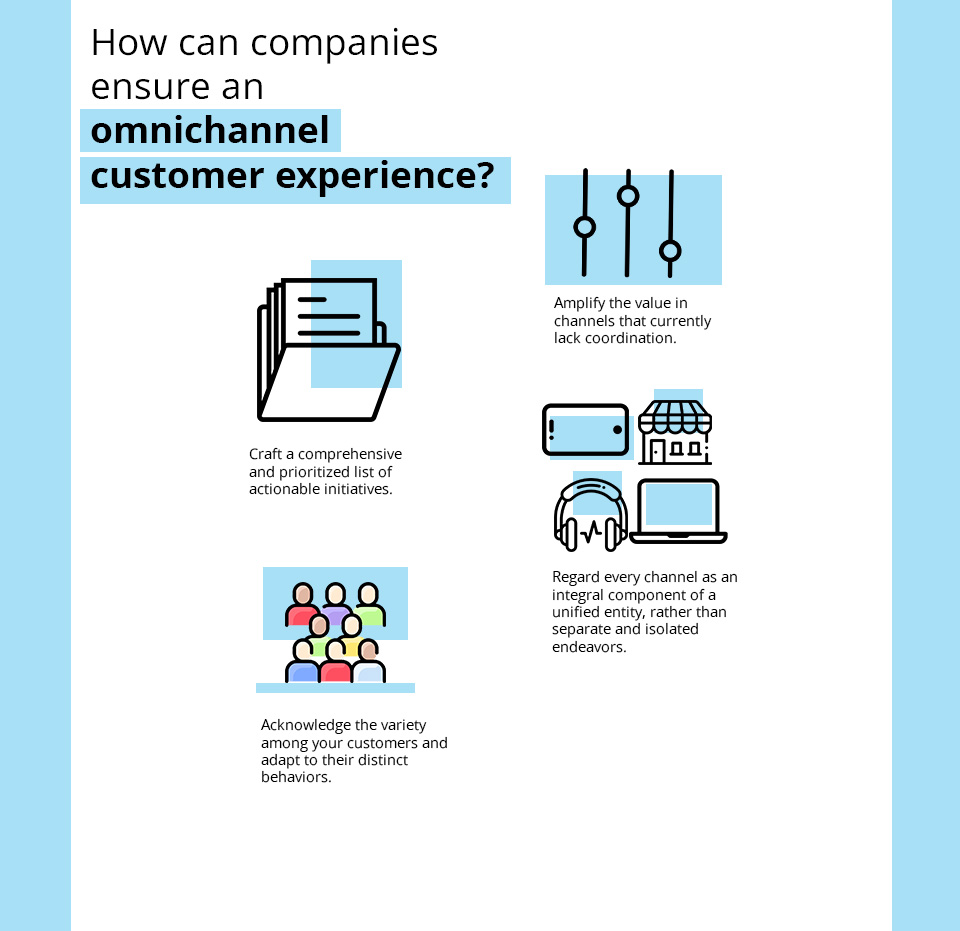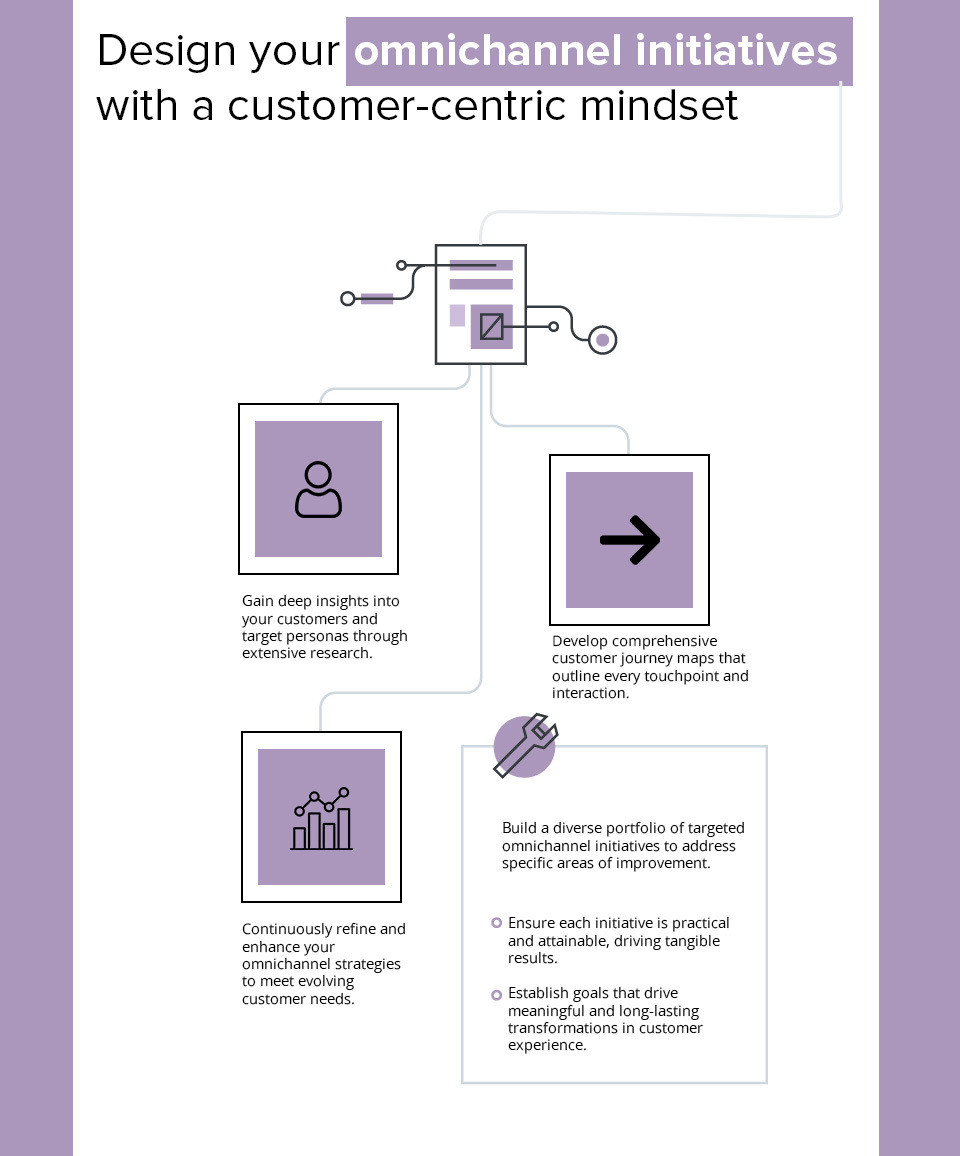In today's interconnected world, it has become crucial for brands to maintain relevance and uniqueness across all communication channels while ensuring a consistent and seamless customer experience. However, despite having advanced analytics systems and marketing automation programs, a significant challenge remains—connecting the dots and unifying data from various disparate systems.
Without a comprehensive understanding of how customers engage with their business at every stage, companies face difficulties to unlock the full potential of their customer journeys. This is where the integration of offline and online customer interactions has emerged as a pivotal element in overcoming this challenge, leading to the rise of omnichannel marketing. One platform that empowers businesses to create personalized, one-to-one customer journeys across multiple devices and channels is the Salesforce Customer 360 platform.
In this blog, we will delve deeper into the importance of omnichannel marketing and its impact on customer experiences. We will explore how Salesforce serves as a catalyst for building personalized, integrated customer journeys that drive sales and foster long-term customer loyalty.
Why does Omnichannel Matter?
Providing a personalized customer experience is no longer a luxury—it's a necessity. Picture this: You're faced with a choice between two companies. One effortlessly pulls in your past online interactions to understand your preferences, while the other bombards you with a barrage of forms and redundant questions. Which one would you choose? It's clear that the company that values your time, understands your needs, and utilizes your existing data to enhance your experience has the upper hand.
In fact, studies show that a staggering 70% of customers prioritize connected processes when deciding which businesses to engage with. They seek smooth transitions between departments and channels, and they crave contextualized interactions that build upon their earlier engagements. It's no surprise, then, that over 80% of customers are willing to share relevant personal information if it means bridging the gap between their online interactions and in-person experiences.
This is where the power of an omnichannel approach comes into play. By successfully implementing an omnichannel strategy, companies can eliminate the frustration of disconnected departments and processes. Imagine a customer who initiates a conversation through your website's integrated chatbot to resolve an issue. Later, they decide to reach out to your call center for further assistance. With an omnichannel experience in place, the customer expects—and rightfully so—that they won't have to repeat their concerns or start from scratch. It's about providing a seamless journey that respects their time and delivers consistent support across all touchpoints.
What Exactly is Omnichannel Experience?
Multichannel refers to the utilization of multiple marketing and service channels operating autonomously to improve the customer experience. However, it is when these channels intertwine and collaborate that multichannel transforms into omnichannel.
From a customer's standpoint, omnichannel enables a singular and cohesive interaction across all channels, blurring the boundaries between online and offline. This all-encompassing approach covers all touchpoints throughout the customer lifecycle, ranging from websites, social media platforms, and live chats to follow-up emails, phone calls, and even face-to-face support on the sales floor.

Let's consider a scenario to illustrate this concept.
Imagine you're a tech-savvy individual in search of a new smartphone. Excited to explore the latest models, you begin your journey online, browsing different websites, comparing features, and reading customer reviews. After thorough research, you narrow down your options and decide to visit a nearby electronics store to physically interact with the devices.
As you step into the store, you expect a smooth transition from your online exploration to the in-store experience. You hope to find knowledgeable sales reps who are aware of your online activity and can provide additional insights and assistance.
Fortunately, the store you visit understands the value of an omnichannel approach. The sales rep greets you and acknowledges your interest in the specific smartphone models you had researched online. They demonstrate the various features of smartphones, allowing you to test their performance, camera quality, and user interface. They address your concerns, providing valuable recommendations tailored to your preferences and budget. Additionally, they inform you about ongoing promotions and bundle offers that may enhance your overall purchase.
This scenario exemplifies how an integrated omnichannel customer experience enhances the retail industry, particularly in the tech sector. By combining online research with in-store interactions, businesses can offer customers a comprehensive and tailored shopping journey. This approach builds trust, improves customer satisfaction, and ultimately drives sales and brand loyalty.
READ MORE: How To Enable Effective Customer Experience Management In CRM?
How Salesforce Empowers Healthcare with the Omnichannel Approach?
An omnichannel approach in healthcare brings numerous advantages that positively impact patient care, communication, and overall healthcare outcomes. By seamlessly integrating multiple channels of communication and services, healthcare providers can create a comprehensive and cohesive experience for patients. Let's explore the advantages of an omnichannel approach in healthcare.
1. Unified Patient Data and Personalized Communication
One of the key advantages of using Salesforce in healthcare is its ability to integrate patient data from various sources. By consolidating electronic health records, appointment systems, and other relevant information, Salesforce provides a unified view of each patient. This comprehensive understanding allows healthcare providers to personalize their communication based on the patient's medical history, preferences, and needs.
2. Multichannel Patient Engagement
Salesforce enables healthcare organizations to engage with patients through multiple channels. Whether it's a user-friendly web portal, a mobile app, or social media platforms, patients have the flexibility to interact with their healthcare providers using their preferred channels. They can schedule appointments, access test results, securely communicate with healthcare professionals, and even participate in virtual consultations, all from the convenience of their chosen platform.
3. Seamless Care Coordination
Care coordination plays a crucial role in delivering high-quality healthcare. Salesforce facilitates seamless collaboration among healthcare teams by securely sharing patient information, treatment plans, and updates in real-time. This ensures that everyone involved in a patient's care is on the same page, resulting in smoother transitions and better continuity of care.
4. Data Analytics for Insights and Improvement
Salesforce's robust analytics capabilities provide valuable insights into patient behavior, trends, and opportunities for improvement. By analyzing data from various touchpoints, healthcare organizations can identify patterns, personalize interventions, and make data-driven decisions that lead to better patient outcomes. These insights enable healthcare providers to continuously improve their services and deliver a more personalized and effective healthcare experience.
5. Telehealth Integration for Remote Care
In today's digital age, telehealth has become increasingly important. Salesforce seamlessly integrates with telehealth solutions, enabling virtual consultations and remote patient monitoring. Patients can connect with their healthcare providers from anywhere, making healthcare more accessible and convenient. This integration enhances the overall patient experience and expands access to care.
6. Putting Patients at the Center
At its core, Salesforce empowers healthcare organizations to put patients at the center of their care. By unifying patient data, personalizing communication, enabling multi-channel engagement, facilitating care coordination, providing actionable insights, and supporting telehealth services, Salesforce transforms the way healthcare is delivered. It's about creating an omnichannel experience that revolves around the unique needs and preferences of each patient, leading to improved patient satisfaction, better outcomes, and enhanced healthcare delivery.
Amplify Customer Experiences through Strategic Omnichannel Integration
Although the essence of the omnichannel experience may seem simple, companies are still navigating the intricacies of its successful implementation. While many businesses can effectively handle the multichannel aspect, industry leaders are investing in omnichannel as a testament to their unwavering commitment to delivering unparalleled customer experiences.
Now, let's delve into some strategies that can transform these processes into a well-oiled machine and explore the key considerations when integrating channels for a seamless omnichannel customer experience.
1. Gain a comprehensive understanding of customer behavior
To create an exceptional omnichannel experience, you need to get inside the minds of your customers. This means diving deep into their preferences, habits, and how they like to engage with your brand. By understanding their unique journey from start to finish, you can ensure that every interaction is tailored to their needs.

- Leverage customer data
Unlock the power of data by collecting and analyzing information about your customers. This includes their preferred channels of communication, buying patterns, and interactions with your brand. By harnessing the insights from your CRM system and analytics tools, you can make data-driven decisions that improve the overall customer experience. - Employ surveys to understand customer needs
Conducting surveys is an effective approach to gain deeper insights into your customers' experiences and challenges. Engage your sales and support teams to collect feedback from direct interactions with customers. Additionally, integrate short customer satisfaction surveys into your online channels, triggered at specific actions or touchpoints. These surveys serve as valuable sources of feedback to fine-tune your approach and make necessary improvements. - Embrace customer segmentation
Remember that your customers are not all the same. They have different needs, preferences, and motivations. By categorizing customers according to their product preferences, purchase frequency, or customer lifetime value (CLV), you can develop targeted strategies and create user personas. This ensures that every touchpoint feels relevant and meaningful to your customers. - Engage in meaningful customer conversations
Never underestimate the importance of direct communication with your customers. Engage in conversations to understand their pain points, solicit feedback, and what they appreciate most about your brand. Consider incorporating quick questionnaires during the shopping experience to gather valuable insights. For instance, after analyzing data, you might discover that customers prefer the option to pick up their orders in-store instead of waiting for delivery. Enhancements like order tracking and proactive notifications can enhance the shopping experience and foster customer loyalty.
2. Craft your own omnichannel universe
Once you've mapped out your customer journey, it's time to brainstorm ideas on how to create a seamless experience across all channels. How can your team effortlessly transition from one channel to another without losing valuable customer data? It's crucial that your customers' information is securely stored and easily accessible throughout your data management system and CRM platform.

The key is to break down any barriers between your channels and technology so they can collaborate harmoniously, filling in any missing pieces of information. By eliminating data loss and synchronizing your systems, you can provide consistent and personalized experiences at every touchpoint.
Additionally, the power of social media cannot be underestimated in today's digital landscape. As an extension of people's lives, social platforms offer a valuable avenue to engage with customers and amplify your omnichannel presence. By integrating your services with popular social networks like Instagram, Facebook, or Twitter, you can reach customers where they spend a significant amount of time. This allows for targeted marketing campaigns, social commerce opportunities, and the ability to tap into user-generated content, all of which contribute to a more immersive and interconnected omnichannel experience.
3. Measure and Optimize Your Omnichannel Customer Experience
Once you have established your omnichannel processes, it's crucial to gauge the effectiveness of your customer experience efforts. By measuring key metrics and collecting feedback from customers at various touchpoints along their journey, you can gain valuable subjective insights into their experience with your brand.
- To gather feedback, consider implementing channels such as call centers, online chats, quick surveys, or social media platforms. These avenues allow customers to voice their opinions, concerns, and suggestions, enabling you to assess their satisfaction levels and identify areas for improvement.
- However, data collection is just the first step. To truly optimize your omnichannel experience, you must organize and manage the data effectively. This includes conducting in-depth research and analysis to uncover patterns, trends, and customer preferences.
- Regularly monitoring and evaluating your omnichannel performance helps you identify any gaps or bottlenecks in the customer journey.
From Customization to Connection: Crafting a Seamless Experience that Resonates with Customers
Salesforce emerges as the ultimate ally for businesses striving to achieve an omnichannel personalized experience that leaves a lasting impression. With its unparalleled suite of tools and capabilities, Salesforce seamlessly integrates communication channels, allowing businesses to create a symphony of customer interactions.
It is evident that the investment in this process is undeniably valuable. As you prioritize improving the customer experience, your company will witness remarkable growth in both revenue and market presence.
So, if you're looking to achieve new levels of efficiency through Salesforce's capabilities, then Daffodil is the right technology partner for you. We are a registered Salesforce consulting partner with 20+ years of experience in providing Salesforce solutions to 100+ clients across various industries. Let our Salesforce managed services team tackle your implementation hurdles and guide you toward achieving an exceptional omnichannel experience.





